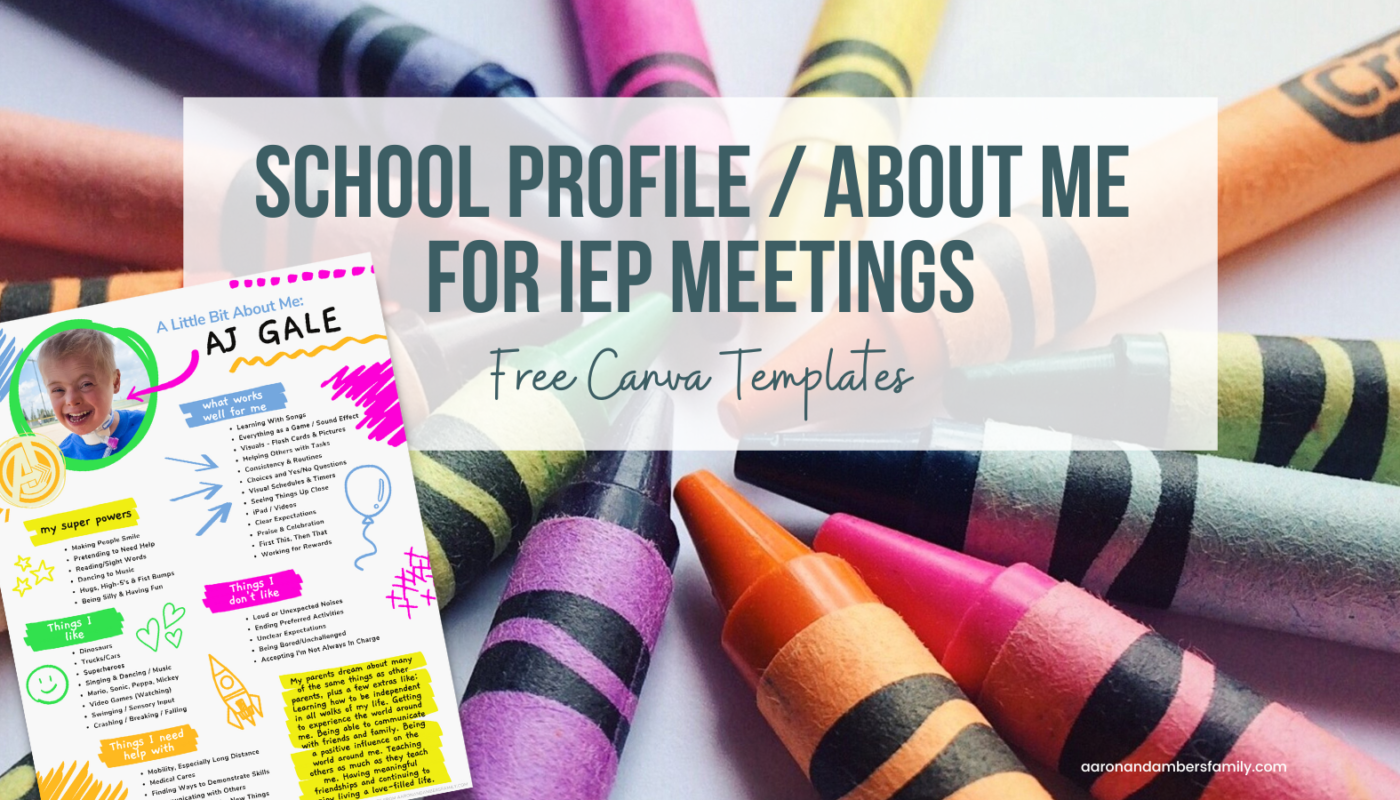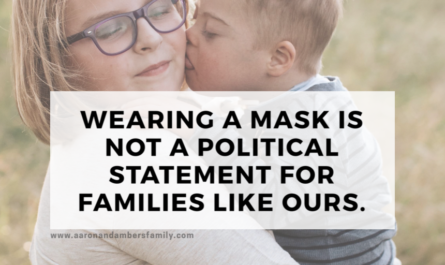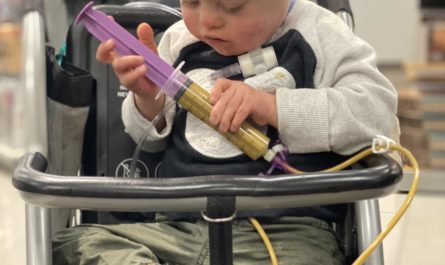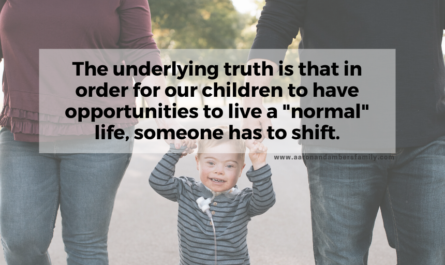A one-page profile sheet (also known as a school profile or school info sheet) can be a great way to introduce your kid to new members of the IEP team, as well as update existing team members with new information.
IEP meetings can often be full of goals and technical details, and introducing the team to your child by beginning the meeting with the information that you feel is most important and relevant to your child. As you fill out the sheet, it’s essential to remember the goal of the document should be to share what you, as the expert on your child, already know to be true about your child to equip the team and your child to have the best experience possible.
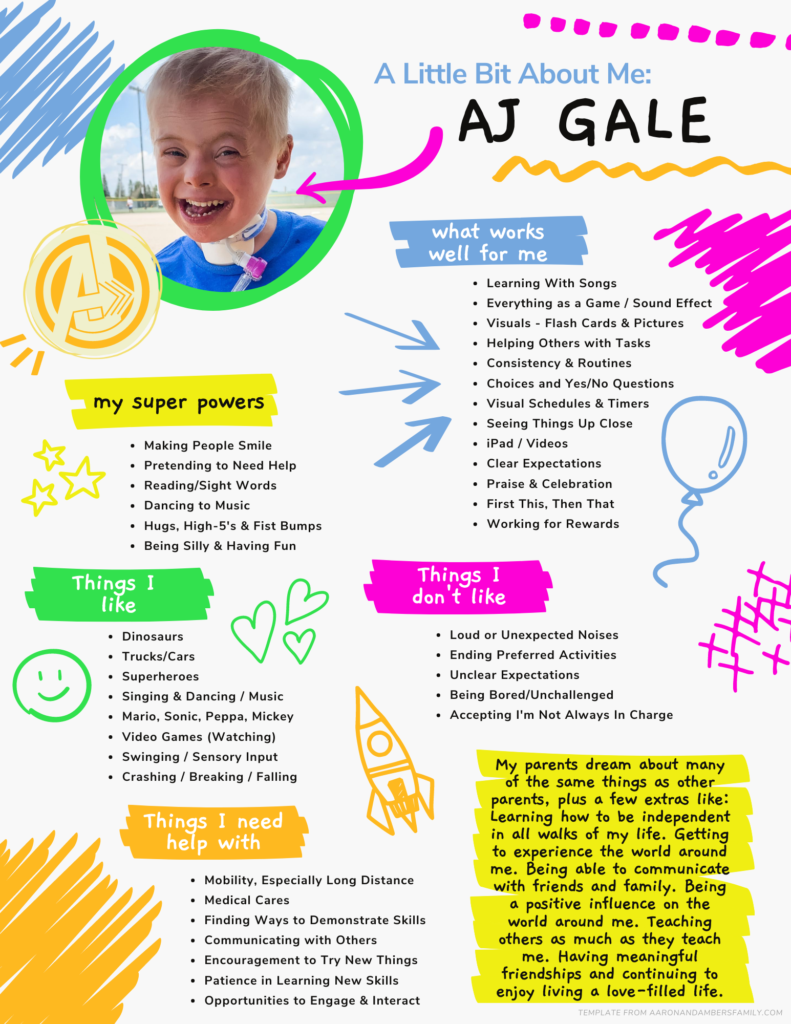
Skip to downloading this template.
What Should Be Included on a One-Page Profile for the IEP Team?
Below are some suggestions for what can be included in a one-page profile. Some of these topics can be combined; some items may make sense for your child under different headings, etc. The important thing is that you find a way to share information that best represents your child and their goals.
Strengths / “Super Powers”
Your child’s strengths could be academic, social, emotional, or other skills. Don’t limit yourself to only sharing what you would typically relate to the school environment, as those other skills your child has may be something that can be leaned on to help work on any of their goals.
- Visual Learner
- Reading Sight Words
- Knows Letter Sounds
- Counting
- Making People Smile
- Giving High Fives
- Having Fun
- Excellent Memory
- Fast-Learner
- Great Friend
Things I Like
If your child needs motivation or a preferred activity at times, it can be helpful for the team to have a list of go-to things that may come in handy. This could be toys, activities, preferences for materials, characters, family, friends, music preferences, TV shows, foods, drinks, etc.
- Dinosaurs
- Trucks/Cars
- Singing
- Dancing
- Video Games
- Swinging
- Sensory Input
- Crashing/Smashing
- Being Silly
- High-Fives / Fist-Bumps
- I-Pad Time
- My Mom/Dad/Brother/Sister
- My Pets
- Books
- Pop Music
- Bluey
- Apple Juice
- McDonald’s
Things I Don’t Like
Similar to listing out what your child does like, it can be essential to communicate things that your child does not like. This might help avoid some uncomfortable or unnecessary situations or may provide opportunities for growth and challenge. Another potential heading for this section may be “What Doesn’t Work For Me”
- Loud/Unexpected Noises
- Not being given a choice
- Yelling
- Unclear Expectations
- Being Bored
- Ending Preferred Activities
- Being Rushed
- Assuming I Don’t Understand
- Sports/Physical Activities
What Works For Me
If your child has ways they learn that work best for them, this is a great way to represent them and help guide the team on where a good starting point may be for your child.
- Learning with songs
- Learning through games
- Using visuals
- Flashcards
- Consistency and Routines
- Visual Schedules
- Timers
- Clear Expectations
- Excessive Praise/Celebration
- Peer Modeling
- First/Then Visuals
- Advance Notice of Transitions
- Taking Breaks
- Social Stories
Things I Need Help With / Things I’m Working On
If there are areas where you know your child struggles, it can be good to call those out in advance so the team can identify ways to provide extra support when needed.
- Long Distance Mobility
- Medical Cares
- Finding Ways to Demonstrate Skills
- Communicating with Peers
- Being Encouraged to Try New Things
- Finding Opportunities to Engage with Others
- Understanding Social Expectations
- Fine Motor Skills (Writing, Cutting)
- Following Directions
- Talking in Full Sentences
Vision Statement / Mission Statement
One of the most influential pieces of the one-page profile is often the vision statement. This may be your vision, your child’s vision, or a combination of both. Ultimately this should summarize what your long-term goals are for your child and can help the team understand where the areas of priority are. As you write a vision statement, it can be helpful to keep in mind both short-term goals (ex: the current school year) and long-term goals. This statement may or may not ultimately be included in your child’s IEP as one of the required fields/questions.
An example of the IEP vision statement that we used for AJ’s first-grade one-page profile is below:
My parents dream about many of the same things as other parents, plus a few extras like: Learning how to be independent in all walks of my life. Getting to experience the world around me. Being able to communicate with friends and family. Being a positive influence on the world around me. Teaching others as much as they teach me. Having meaningful friendships and continuing to enjoy living a love-filled life.
Creating Your Child’s One-Page Profile
The most critical piece of your child’s one-pager is the information included in it. A hand-written and photocopied one-page profile will provide that needed information. You can even get your child involved to help decorate the page to give it a personalized feel. Don’t feel required to build an elaborate document to present these details!
We like digital art and try to keep things “fun.” Other children, especially older children, may prefer a more mature look and feel.
One great place to look for templates is Canva. The resume templates, in particular, can provide a great starting point for a layout that has photos as well as segmented sections of text.
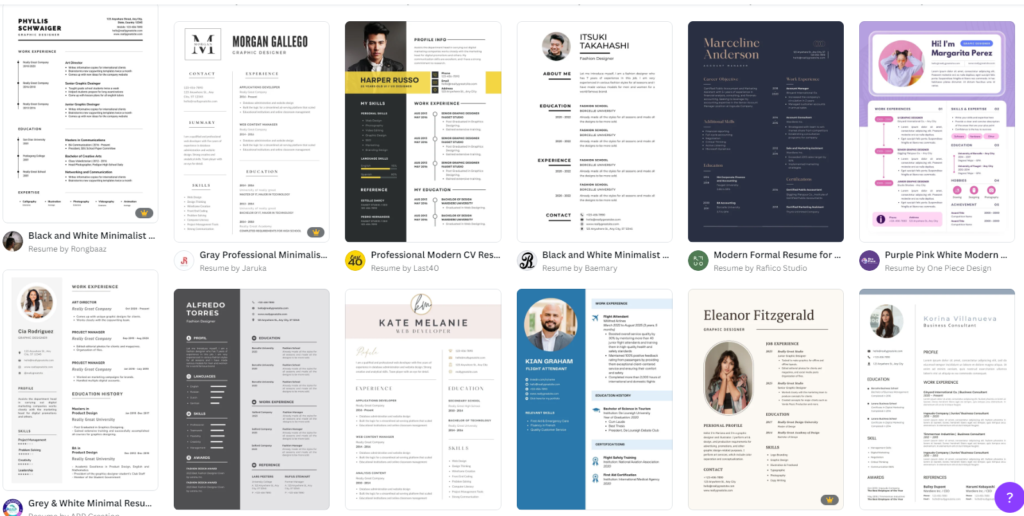
Free Download – One Page Profile Template for Canva
If you like to keep things “fun” as we do, we’ve put together an editable version of AJ’s first-grade profile that you can modify for your child in Canva. There are two versions of the template available – one that is fully customizable and requires a subscription to Canva Pro and another that allows you to edit just the text and photos that you can use with the free version of Canva.

